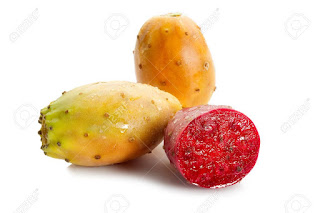Some posts before I talked about a Colombian folk music called cumbia. That's right, it rose in Colombia, like a fusion of Spanish, African and Indian characteristics that, mixed, gave what we know like the folk version of this genre. What is typical for it are the dress and the primitive instruments used, for exemple, during the most famous Colombian carnival, Carnival of Barranquilla.
So, why I want to write about cumbia from other countries? How it passed to be part of popular music of Argentina, Mexico or Peru? Well, between 1940 and 1960 famous musicians like Lucho Bermúdez or Luis Carlos Meyer with their orchestras went to give concerts in all Latin America. For this aim they needed to make from these "wild", folk songs something more accesible for stranger public. Thanks for this operation, in the countries I've already mentioned, the interest for cumbia appeared and new, local artists started to record. They put local instruments like charango, panpipes, etc. to the rhytm and in this way changed a little its basic form. In general, the genre turned to be more modern, popular, danced in discos.
In Peru, because right now is the country thar most interests me, there are two more listened groups. One of them is Los Hijos del Sol (The Children of the Sun) that interpets a well-known song "Cariñito". It has two version: one is cumbia version, and the other, that hasn't any official author, can be played and sang by anybody, is with zampoña (panpipes) and charango, the typical Andean instruments that made so popular Peruvian music.
So, why I want to write about cumbia from other countries? How it passed to be part of popular music of Argentina, Mexico or Peru? Well, between 1940 and 1960 famous musicians like Lucho Bermúdez or Luis Carlos Meyer with their orchestras went to give concerts in all Latin America. For this aim they needed to make from these "wild", folk songs something more accesible for stranger public. Thanks for this operation, in the countries I've already mentioned, the interest for cumbia appeared and new, local artists started to record. They put local instruments like charango, panpipes, etc. to the rhytm and in this way changed a little its basic form. In general, the genre turned to be more modern, popular, danced in discos.
In Peru, because right now is the country thar most interests me, there are two more listened groups. One of them is Los Hijos del Sol (The Children of the Sun) that interpets a well-known song "Cariñito". It has two version: one is cumbia version, and the other, that hasn't any official author, can be played and sang by anybody, is with zampoña (panpipes) and charango, the typical Andean instruments that made so popular Peruvian music.
Cumbia version
folk interpretation
The other group I need to talk is Corazón Serrano. Their songs are everywhere! They are always trendy! Any radio, any bus you go up, they are there with their songs! I decided to compare them with our Polish disco polo, because they can be considered quite... kitschy. It's so ingrained in the society. There are Peruvians that protests that it's very low culture, and in part they are in the right. Just listen yourself and judge.
"Como pude enamorarme" is one of the current hits. How can you observe, it's an easy rhytm... Maybe too easy for some people :D
If you have a few minutes, you can take a look at one of my articles in a student page about Latin America, Iberoameryka.com. This one is exactly about cumbia. The link: https://iberoameryka.wordpress.com/kultura/muzyka/cumbia-kolumbijski-dar-dla-ameryki-lacinskiej/ .
If you have a few minutes, you can take a look at one of my articles in a student page about Latin America, Iberoameryka.com. This one is exactly about cumbia. The link: https://iberoameryka.wordpress.com/kultura/muzyka/cumbia-kolumbijski-dar-dla-ameryki-lacinskiej/ .









